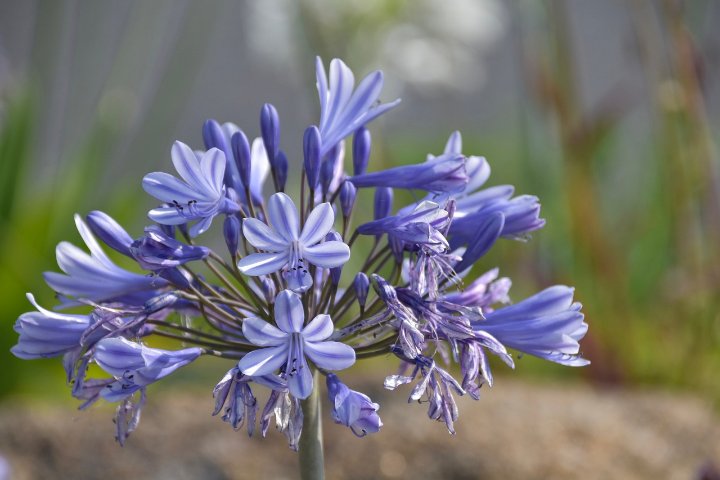Introducing the delightful Tuberose, a captivating addition to any garden with its exquisite blooms and enchanting fragrance. In this guide, we’ll explore how to grow and care for Tuberose plants, ensuring they thrive in your garden from planting to bloom. Let’s dive in and discover the secrets to cultivating these beautiful flowers!
Best Tuberose Varieties
| Image | Name | Rating | Shop |
|---|---|---|---|
 | Pink Tuberose |  | |
 | White Double Pearl Tuberose Bulbs |  |
Tuberose Hardiness Zones
Tuberose, with its captivating fragrance and elegant appearance, thrives in hardiness zones 7 to 11, making it a popular choice for gardeners in a wide range of climates. Whether you’re cultivating these beauties in a temperate coastal region or a warmer inland area, Tuberose will grace your garden with its stunning blooms and delightful scent.
How Much Sun Do Tuberose Need
For optimal growth and flowering, Tuberose requires full sun exposure. Choose a planting location that receives at least six to eight hours of direct sunlight daily to ensure that your Tuberose plants receive the light they need to thrive. In areas with scorching summer temperatures, providing some afternoon shade can help protect the delicate blooms from sunburn and prolong their lifespan.
Tuberose Soil Requirements
Prepare a well-drained planting site with loamy soil to accommodate your Tuberose bulbs. Loamy soil offers the ideal balance of moisture retention and drainage, allowing the bulbs to establish healthy root systems without the risk of waterlogged conditions. Prior to planting, amend the soil with organic matter such as compost or well-rotted manure to enrich its fertility and improve its texture.
Tuberose Soil pH
Maintaining a neutral soil pH level is essential for the successful cultivation of Tuberose. Aim for a pH range between 6.5 and 7.0 to provide an optimal growing environment for your plants. Conduct a soil test before planting to determine the pH of your soil, and make any necessary adjustments using organic soil amendments or pH-adjusting products.
Tuberose Plant Spacing
When planting Tuberose bulbs, space them approximately 2 to 3 feet apart to allow for proper airflow and prevent overcrowding as the plants mature. Adequate spacing encourages healthy growth and reduces the risk of fungal diseases by minimizing humidity around the foliage. If you’re planting multiple rows of Tuberose, maintain a similar distance between rows to ensure even growth and development.
Tuberose Water Requirements
While Tuberose is relatively drought-tolerant once established, consistent moisture is crucial during the initial stages of growth and flowering. Water your Tuberose plants regularly, providing enough moisture to keep the soil evenly moist but not waterlogged. Aim for approximately one inch of water per week, adjusting based on rainfall and environmental conditions. Mulching around the base of the plants helps retain soil moisture and suppresses weed growth, contributing to overall plant health.
Tuberose Temperature Requirements
Tuberose plants thrive in moderate temperatures, making them well-suited for cultivation in most regions. Ideally, temperatures ranging from 60 to 75 degrees Fahrenheit provide the perfect growing conditions for Tuberose, promoting robust growth and abundant flowering. Protect your Tuberose plants from extreme heat or frost by providing shelter or utilizing protective coverings when necessary.
Tuberose Humidity Requirements
While Tuberose can tolerate a range of humidity levels, it generally prefers moderate humidity and does not thrive in excessively dry or humid conditions. Adequate air circulation around the plants helps prevent the buildup of moisture, reducing the risk of fungal diseases such as grey mold. Avoid overhead watering, which can contribute to humidity-related issues, and provide proper spacing between plants to promote airflow.
Tuberose Fertilizer Requirements
Tuberose plants have minimal fertilizer requirements and can thrive in relatively nutrient-poor soil. Apply a balanced fertilizer sparingly at the beginning of the growing season to provide essential nutrients for healthy growth and flowering. Avoid over-fertilizing, as excessive nutrients can lead to lush foliage at the expense of blooms. Instead, focus on maintaining soil fertility through organic amendments and regular watering practices.
Tuberose Pests
While Tuberose is relatively pest-resistant, it may occasionally attract thrips, small insects that feed on plant tissues and cause damage to the foliage and flowers. Monitor your Tuberose plants regularly for signs of thrip infestation, such as distorted or discolored foliage, and treat affected plants promptly with insecticidal soap or neem oil to control the pests.
Tuberose Diseases
One of the common diseases that can affect Tuberose is grey mold, a fungal infection that thrives in damp, humid conditions. To prevent grey mold and other fungal diseases, avoid overhead watering and provide proper spacing between plants to promote airflow and reduce humidity around the foliage. If grey mold or other fungal issues occur, treat affected plants with fungicidal sprays according to label instructions.
By following these guidelines and providing attentive care, you can cultivate healthy and vibrant Tuberose plants that will reward you with their exquisite blooms and enchanting fragrance. Whether planted in garden beds, containers, or borders, Tuberose adds a touch of elegance and charm to any landscape, making it a cherished addition to gardens around the world.













